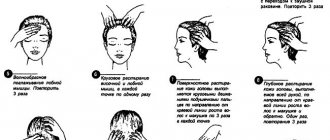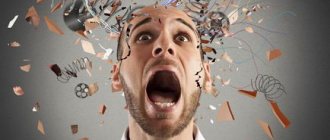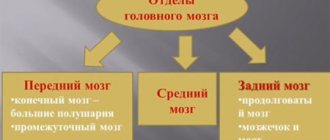The human brain is very lazy. Yes, he has been little studied, he has a lot of untapped abilities, but he is lazy. Therefore, it will not be possible to get it to work at full capacity for eight hours in a row.
During an intense thought process, the brain uses 25% of the energy consumed by the entire body, that is, a lot.
Therefore, the self-defense mechanism is triggered - rest and do not overexert yourself. You need to learn how to properly distribute the load, alternate between activity and rest, interesting and boring.
So how can you make your brain work?
Five Second Rule
A simple rule on how to teach your brain to work was invented by American CNN commentator, TV presenter and motivational speaker Mel Robbins. Her book, The Five Second Rule, describes in detail many life situations in which this rule has helped people.
Its effectiveness has been appreciated by business people, including Better Humans author Dave Wentworth.
Once you decide to do something, you have exactly five seconds to start doing it. Then the brain will find some small things that need to be done right now. Wipe the keyboard, water the flowers or wash the dishes, but don’t work.
Tell your brain you'll get to work when you count "5, 4, 3, 2, 1"! This works for two reasons:
1. The final point, count 1, calls for action. I just want to say “Start”!
2. It’s unpleasant to make promises to yourself and not keep them, so you have to do it.
This scheme is applicable in many life situations. Count from five to one in a stressful situation - and you no longer want to yell at a naughty child.
If you need to do an unpleasant thing, start acting in five seconds. It's time to get rid of the accumulated “tails”.
Myth: The brain never gets tired
The brain cannot get tired from mental work, but psychological and physical conditions can affect a person's concentration and activity. It turns out that the brain works better when a person hears the sound of waves, feels the salty breeze, sees all shades of blue and feels the warm sand. That's why we recover faster near the ocean.
Try halotherapy, take a walk in the forest, go on vacation to the sea or any body of water, and in the summer, don’t be shy about walking barefoot. Try to relax on the beach as often as possible.
Rule of 25 minutes work and 5 minutes rest
To activate the brain, Italian student Francesco Cirillo proposed the Pomodoro method back in the 1980s. The method is named after the tomato-shaped kitchen timer that Cirillo used.
Persuade your brain to work for just 25 minutes. It’s not even half an hour, but just a few minutes! “Okay,” the brain thinks, and turns on. And then either you do at least part of the useful, but possibly complex work in 25 minutes, or you immerse yourself in the process so that a couple of hours will pass unnoticed.
This approach will help improve performance.
After every 25-minute pomodoro, take a five-minute break and begin a new amount of work. After every fourth pomodoro, take a long break of 15-30 minutes. Taking breaks will make your brain more productive.
Work and don't get distracted. And if a thought about some other matter appears in your head, then just write it down and continue working.
The method quickly became popular due to its low technology: just a timer and a piece of paper with a pencil. The ticking of the timer reminds you that work is in full swing, and the bell notifies you of a break (hello to school years).
Manifestations of brain activity
Brain activity is manifested by electrical oscillations - brain rhythms, among which about 8 types of oscillations are identified - from alpha to tau rhythm.
- The alpha rhythm is recorded at rest and during relaxed wakefulness. As soon as the functional activity of the brain increases, alpha oscillations begin to fade until they disappear.
- Beta waves are “responsible” for higher cognitive functions, memory, attention. They fade with motor activation or tactile stimulation.
- The gama rhythm is fixed when solving intellectual problems that require full concentration of attention.
- The delta rhythm regulates the recovery processes of the brain (during sleep). Excessive increases in delta waves are almost always associated with problems with attention, memory, and other cognitive functions.
- Theta waves appear at the moment of transition from relaxed wakefulness to drowsiness.
- The kapa rhythm, arising in the temporal regions, manifests itself when alpha rhythms are suppressed in other areas of the brain during mental activity.
- Mu oscillations are observed in only 10-15% of people. Occurs with increased brain activity and mental stress.
- The tau rhythm becomes a response to the blockade of sound signals.
To assess a person’s condition and his mental activity, it is necessary to take into account the ratio of rhythms. Thus, a decrease in alpha oscillations with eyes closed with a simultaneous increase in beta activity may indicate psycho-emotional stress and anxiety. A decrease in alpha activity with eyes closed with an increase in theta rhythms becomes a sign of depression.
Make quality breaks
How to improve brain function with breaks? Agree with the main body about what kind of rest you will get after fruitful work.
“If you don't see the benefits of taking breaks, you might not be good at taking them,” says Carson Tate, author of Keep It Simple: Harnessing the Power of Your Own Productivity Style.
Break 5-15 minutes. Tate believes that the best activity for a short break is physical activity. You can even just walk up the stairs. Maura Thomas, author of Work Without Walls, says that sometimes the best thing to do is do nothing.
Taking a five-minute break to get distracted and daydream is the perfect way to relax.
When doing so, it can be helpful to look at something green—according to Harvard Business Review research, “green microbreaks” increase productivity and concentration.
Half an hour break. Maura Thomas and Laura Stack (author of The Exhaustion Cure) recommend spending 30 minutes on active movements. The best option is brisk walking. Carson Tate also notes the benefits of talking with other people, but not about work.
60 minutes of rest, according to Tate, should be used to change the environment and leave the workplace.
Coach Deb Lee also recommends decluttering your mind by writing out your thoughts - this will help you completely step back from work during your break and plan what you'll do next when you get back to work.
High-quality ones will help you be more productive and improve brain function.
Myth: swings are for children
Playing on swings in early childhood promotes the development of certain parts of the brain responsible for language and information processing. But at any age, swings strengthen the vestibular apparatus, improving spatial orientation skills. Even astronauts confirm this.
Swing on a swing for 15-20 minutes, 2-3 times a week. This will relieve you from seasickness, as well as the effects of excessive alcohol consumption.
Release dopamine during routine work
The first delight and interest in the new job wears off and a period of stagnation sets in. For different people this period varies, be it six months or five years, but such a period will come. Why does this happen and how to increase brain productivity?
This is inherent in nature in a part of the brain called the “striatum.” The pleasure of exploring something new leads to the release of dopamine.
All business content in a convenient format. Interviews, cases, life hacks of the corporation. world - in our telegram channel. Join us!
This system of brain functioning is observed even in children at an early age: a new toy captivates the child, and the child does not let it out of his hands for a day, a week. But then he finds a new toy. And not at all because this toy is better.
The thing is that it's new.
University of North Carolina professor Daniel Cable also experienced dissatisfaction with his job, although he understood the importance of teaching students. A diagnosis of cancer prompted Cable to rethink his work and life. He realized that thousands of people are grateful to him, and this is something to be proud of.
When it seems to the brain that there has been no change or something new for too long, it says: “You’re better than this, this kind of work is not for you.”
Professor Daniel Cable, in a column for Fast Company, talks about three things that will make the brain produce dopamine even during boring work.
1. Play to your strengths. Think about what is unique about you and how it could benefit you. When the professor began to use his strength - humor - he began to enjoy his work again.
2. Experiment. Stepping out of your comfort zone is important. Learn and do something new, even within the same position, take on diverse projects whenever possible.
For example, Daniel Cable began creating new curriculums instead of teaching the same course after course.
3. Use purpose. Finally, identify the impact you're making, Cable says. Correctly defined goals will help you not to lose interest.
Understanding the meaning of your work will add motivation. Not “why do I do this at all,” but “why am I doing this?”
Changes associated with disturbances in brain activity
Dementia
Acquired dementia (dementia) manifests itself in the form of a steady decrease in cognitive interest and the ability to acquire new knowledge, deterioration of long-term and short-term memory, and weakening of abstract thinking. In youth, the cause of this is mainly due to various addictions. In old age, the most common dementias are vascular type, atrophic (Alzheimer's disease, Pick's disease) and mixed. The state of the cardiovascular system also directly affects brain activity. For example, with arrhythmias, various complications can arise that have a destructive effect on cardiac output, blood pressure and, as a consequence, on the blood supply to the brain.
As a rule, the cause of vascular dementia is atherosclerosis of the cerebral vessels, which makes it possible to delay the deterioration of brain function through the use of vascular-sparing therapy.
In 2013, Indian Institute of Medicine researchers found that speaking two languages at home delayed dementia by 4.5 years (on average) compared to those who communicate in only one language. However, the best prevention still remains drugs that improve the condition of blood vessels, and the best therapy is antidementia drugs.
Taking into account the fact that one of the causes of dementia is deficiency conditions (for example, vitamins B12, B9, B3, thiamine), a special role in prevention is played by vitamin-containing nutrition and the use of auxiliary drugs that compensate for the lack of necessary substances (vitamin complexes, dietary supplements, etc. ).
Diffuse changes
Diffuse changes (that is, those in which it is difficult to determine a clear localization of the pathological source, and therefore the pathology is perceived as a problem of the brain as a whole) are manifested by a complex of symptoms and disorganization of the bioelectrical activity of the brain.
The consequences and signs of diffuse changes in the bioelectrical activity of the brain are:
- impairment of human performance,
- decreased mental activity of the brain, memory and attention,
- psychological transformations towards lowering self-esteem, limiting the range of interests, etc.
Diffuse changes in the bioelectrical activity of the brain are detected using EEG. In addition, the EEG can potentially demonstrate a number of other pathologies, which include, for example, epileptic activity.
In epilepsy, a characteristic electrographic phenomenon occurs - the relationship between electroencephalographic patterns and the types of recorded seizures.
The patterns most studied in epileptology are:
- FOV (focal sharp waves),
- PPR (photoparoxysmal reaction),
- generalized spike waves.
They all have their own list of characteristic abnormalities (for example, convulsive manifestations in FOV and FPR).
But EEG diagnostics is associated with a number of difficulties, because the EEG results of practically healthy people can show significant changes, and at the same time, the absence of EEG changes can be observed in people with pathologies.
Electrical activity of the brain reveals signs of the consequences of traumatic brain injury with diffuse axonal damage to the brain. In this case, the EEG is characterized by stable or transient changes of a subcortical and/or brainstem nature.
Warren Buffett's 5/25 Rule
Warren Buffett is an American entrepreneur and investor with a net worth of $84.9 billion. He knows exactly how to achieve what he wants. Buffett advises writing down 25 of your goals and highlighting five of them.
And go straight to these top 5, without being distracted by other things, hobbies, opportunities. The rule is applicable in work planning, career building, family, creativity, in all areas.
Give your brain the mindset that until the five main goals/tasks/to-dos are completed, the others simply do not exist. This will help you not miss opportunities, not waste time, and activate your brain in pursuit of achievements.
Unachieved goals create stress and guilt; they depress you and prevent you from moving on.
Myth: There are no superpowers
Comparison of iPhone and Samsung Galaxy cameras: which has better photo quality
Rich taste, beautiful design and delicate consistency: preparing homemade cheesecake
When to expect collective immunity in Russia: experts made predictions
What we call the sixth sense is often observed among people who have lost certain senses. For example, blind people can sense the space around them by concentrating on hearing, smell, or the functioning of skin receptors. In order to function properly, their brain creates a special map based on the information received.
Practice your sixth sense several times a week using earplugs or an eye patch.
Myth: Milk is good for the brain
Milk has many contraindications. Consuming other dairy products is much better for your brain and body than milk itself. Other foods, such as wine or chocolate, for example, have not yet been proven to have a positive effect on brain function, so they should only be consumed in moderation.
It is known that excess weight destroys nerve pathways, and sugar and trans fats lead to inflammation. The efficiency of the brain decreases and the person may become depressed. But a lack of food can also throw the brain out of balance: it uses all its energy to obtain food, which forces a person to become aggressive and irritable. The lifespan of the brain is reduced, and the risk of developing brain diseases increases.
Myth: Many skills can only be developed in childhood.
The only one who managed to win the heart of the handsome Alexander Panayotov
Scientists will send probes to explore the underground world of the Moon
Rospotrebnadzor explained what will happen to teachers for refusing vaccination
In fact, an adult can develop almost all the same skills as a child. For example, some surgeons began taking violin lessons after age 30 to develop fine motor skills. Special agents have to play video games to improve their reaction speed, logic and correct behavior on a mission.
Don't be afraid to do what you dreamed of as a child. New skills create new neural pathways that prevent brain aging.








